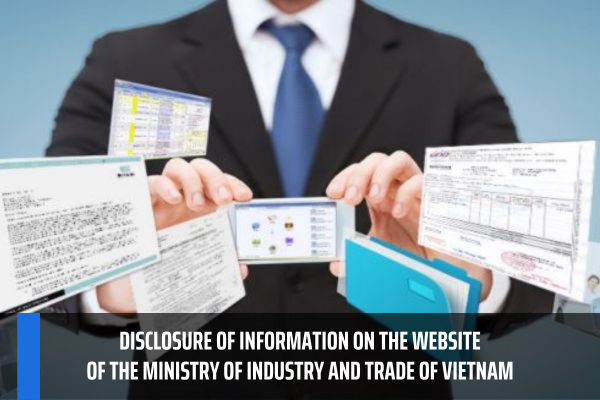Decree 65/2023/ND-CP regulating the elements infringing upon the rights to geographical indications: What are they? What are the responsibilities of organizations managing geographical indications?
Decree 65/2023/ND-CP on the Elements of Infringement of Geographical Indication Rights: What Are They?
According to Article 78 of Decree 65/2023/ND-CP, the elements of infringement upon geographical indication rights include the following factors:
- Elements of infringement upon geographical indication rights are represented in the form of signs affixed on goods, packaging, service means, transaction documents, signboards, advertising means, and other business means that are identical or similar to the extent of confusion with the protected geographical indication.
- The basis for determining the elements of infringement upon geographical indication rights is the scope of protection of the geographical indication determined in the Certificate of Registration of Geographical Indication or international treaties recognizing and protecting the geographical indication, or the extract of the National Register of Industrial Property.
- To ascertain whether a suspected sign is an element of infringement upon the protected geographical indication rights, it is necessary to compare the sign with the geographical indication and compare the product carrying the suspected sign with the product bearing the protected geographical indication, based on the following criteria:
+ The suspected sign is identical or similar to the extent of confusion with the geographical indication. A sign is considered identical to the geographical indication if it resembles the protected geographical indication in terms of linguistic composition, including pronunciation, transliteration for letters, meaning, or in terms of images and symbols within the geographical indication's scope of protection. A sign is considered similar to the extent of confusion with the geographical indication if it resembles it in terms of linguistic composition, including pronunciation, transliteration for letters, meaning, or in terms of images and symbols within the geographical indication's scope of protection, causing consumers to mistakenly believe that the product bearing the sign originates from the protected geographical area;
+ The product bearing the suspected sign is identical or similar to the product bearing the protected geographical indication. A product is considered identical or similar if it is identical or similar in nature, function, utility, and distribution channels.
+ For wines and spirits, besides the provisions of points (a) and (b) of this clause, signs that are identical to the protected geographical indication, including those translated, transliterated, or accompanied by types, styles, imitations, or similar words used for products not originating from the geographical area bearing the protected geographical indication, are also considered elements of infringement upon geographical indication rights.

Decree 65/2023/ND-CP on the elements of infringement upon geographical indication rights: What are they? What are the responsibilities of geographical indication management organizations? (Image from the Internet)
What Are the Responsibilities of Geographical Indication Management Organizations?
According to Clause 1, Article 38 of Decree 65/2023/ND-CP, the responsibilities of geographical indication management organizations are as follows:
- Develop and issue regulations for managing geographical indications;
- Manage geographical indications according to the regulations they issue;
- Compile and disclose the list of organizations and individuals using the geographical indication based on notifications from these organizations and individuals. The list must be updated whenever there are changes;
- Organize the implementation of measures to manage the use of geographical indications by organizations and individuals producing products with geographical indications to ensure these products meet specific quality standards, reputations, and characteristics in line with the description of the product's characteristics bearing the geographical indication;
- Monitor and implement measures to prevent and prohibit acts of infringement upon geographical indication rights and request the competent authorities to handle them in accordance with the law;
- Report to the state management agency on industrial property rights about the status of managing geographical indications biennially.
How to Exercise Ownership Rights over Geographical Indications?
According to Article 37 of Decree 65/2023/ND-CP, the provisions are as follows:
Exercising Ownership Rights over Geographical Indications
1. For Vietnamese geographical indications, the agencies and organizations entitled to manage geographical indications (hereinafter referred to as geographical indication management organizations) stipulated in Clause 4, Article 121 of the Intellectual Property Law include:
a) The People's Committee of the province or centrally-run city where the geographical area corresponding to the geographical indication is located in the case of a geographical indication belonging to a locality;
b) The People's Committee of the province or centrally-run city, which represents other provincial or city-level People's Committees where the geographical area corresponding to the geographical indication is located, in the case of a geographical indication belonging to multiple localities;
c) The district-level People's Committee, district-level town, provincially-governed city, centrally-governed city, or specialized agency under the provincial People's Committee, which is delegated or authorized by the provincial People's Committee to manage the geographical indication;
d) Agencies or organizations granted the management of the geographical indication by the provincial People's Committees, provided that they represent the interests of all organizations and individuals granted the right to use the geographical indication according to Clause 4, Article 121 of the Intellectual Property Law.
2. Agencies or organizations entitled to manage geographical indications according to point d, Clause 1 of this Article are allowed to exercise the ownership rights over geographical indications stipulated in Clause 2, Article 123, and Article 198 of the Intellectual Property Law.
3. For foreign geographical indications, the owner, organization authorized to exercise the owner's rights over the geographical indication, and the geographical indication management organization are determined according to the laws of the country of origin of that geographical indication.
Thus, the exercise of ownership rights over geographical indications must comply with the aforementioned regulations.
LawNet
